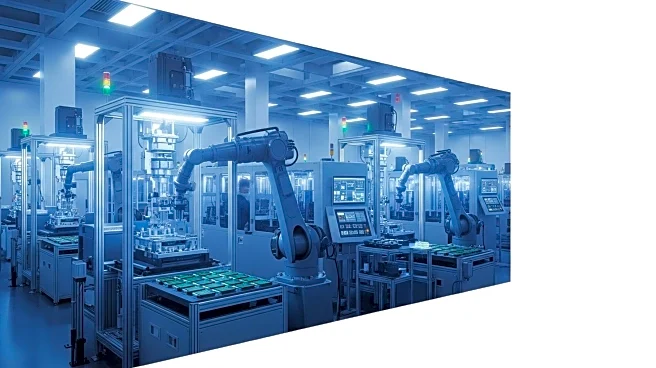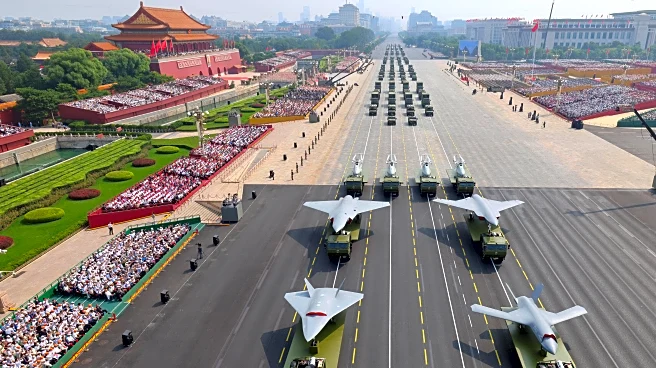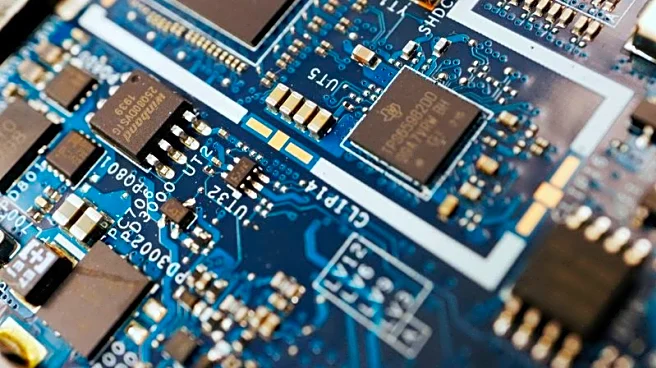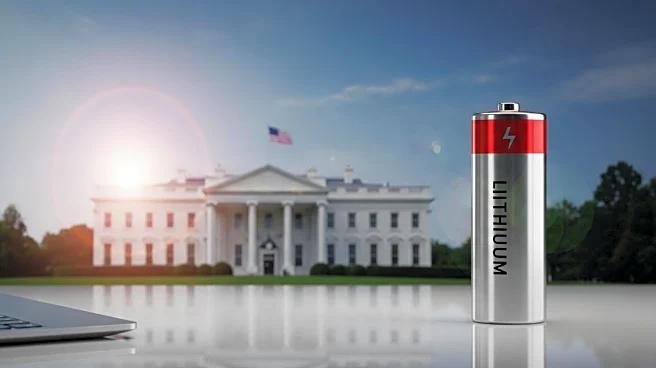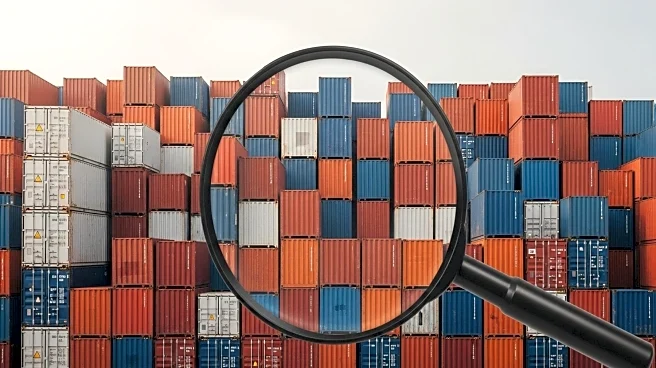What is the story about?
What's Happening?
The Trump administration's approach to reducing America's reliance on foreign semiconductor manufacturing has led to significant developments. In March 2025, Taiwan Semiconductor Manufacturing Co. (TSMC) committed $165 billion to enhance its U.S. manufacturing capabilities in response to potential massive chip tariffs. The administration's strategy, characterized by threats of tariffs, aims to encourage domestic production. The Commerce Department is considering a policy requiring U.S. tech companies to manufacture one chip domestically for every chip imported, with potential tariffs as high as 100%. This move is part of a broader effort to secure the U.S. semiconductor supply chain, given the geopolitical risks associated with Taiwan's dominance in chip production.
Why It's Important?
The potential imposition of tariffs and the push for domestic chip production could have significant implications for the U.S. technology sector. Companies like Intel, which has already received substantial government support, may benefit from increased domestic production. However, the transition to a 1:1 production-to-import ratio poses challenges, as building new manufacturing facilities is time-consuming and costly. The policy could also impact companies like Apple, Nvidia, and AMD, which have plans to manufacture chips in the U.S. but may face increased costs if tariffs are implemented. The broader economic security of the U.S. is at stake, as reliance on foreign chip production, particularly from Taiwan, poses risks amid geopolitical tensions with China.
What's Next?
The Commerce Department's decision on the proposed tariff policy is awaited, and its implementation could reshape the semiconductor industry in the U.S. Companies may need to accelerate their domestic manufacturing plans to avoid tariffs. The administration's approach may also prompt further investments in U.S. manufacturing facilities, potentially leading to job creation and technological advancements. However, the feasibility of achieving the desired production levels remains uncertain, and the industry will closely monitor the administration's next steps.
AI Generated Content
Do you find this article useful?
